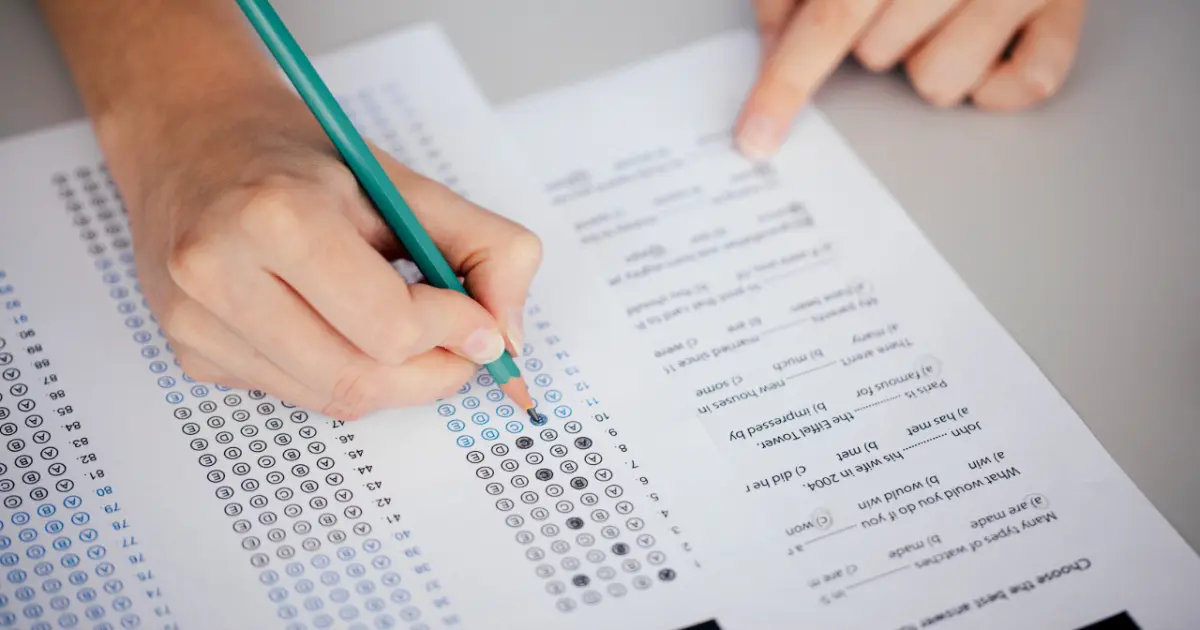
Let's Learn The Full Breakdown of IELTS

Are you planning to take IELTS soon? The test is a widely recognized and standardized test used to measure the English language proficiency of non-native speakers. It is one of the most essential requirements if you want to apply to a top university abroad. Let’s take a look at the full breakdown on the IELTS test to help you prepare better and maximize your score!
What is IELTS?
IELTS stands for International English Language Testing System. It is a standardized test used to measure the English language proficiency of people who are not native English speakers. The test evaluates your ability to listen, read, write, and speak in English. The test has two formats: Academic and General Training, and the score is reported on a 9-band scale, with each band representing a level of English language proficiency.
TOEFL vs IELTS
IELTS and TOEFL are two of the most commonly used standardized tests to measure the English language proficiency of non-native speakers. Both tests are widely accepted by universities, employers, immigration authorities, and professional bodies around the world.
One of the key differences between the two tests is the format. IELTS has two formats - Academic and General Training, while TOEFL has only one format. The Academic format of IELTS is designed for people who want to study at a university, while the General Training format is used for immigration and work purposes. In contrast, TOEFL is mainly used for academic purposes, such as admission to universities and colleges in English-speaking countries.
Another difference between IELTS and TOEFL is the test content. Both tests evaluate the test-taker's ability to listen, read, speak, and write in English. However, the content of the tests is different. IELTS tends to focus more on British and Australian English, while TOEFL focuses on American English. This means that the vocabulary, grammar, and accent used in the two tests may differ.
IELTS Reading Test
The Reading test assesses a candidate's ability to understand written English in academic and general context.
The Reading test consists of three or four reading passages, each followed by a series of multiple-choice questions. The passages are taken from a range of sources, including academic texts, books, newspapers, and magazines. The questions test the candidate's ability to understand main ideas, details, opinions, inferences, and overall meanings of the texts.
The test will contain question types selected from:
- Multiple choice
- Identifying information (True/False/Not Given)
- Identifying writer's views/claims (Yes/No/Not Given)
- Matching information/ headings/ features/ sentence endings
- Sentence/ summary/ note/ table/ flow-chart/ diagram label completion
- Short-answer questions
What is the IELTS Writing Test?
The International English Language Testing System (IELTS) Writing test is a component of the IELTS language proficiency exam. It assesses your ability to write in English for academic and general purposes. The Writing test consists of two tasks that must be completed in 60 minutes: Task 1 and Task 2.
IELTS Writing Task 1
IELTS Writing Task 1 requires you to write a response to a graph, table, chart, or diagram.You must write a minimum of 150 words in 20 minutes. You are assessed on your ability to:
- Organise, present and possibly compare data
- Describe the stages of a process or procedure
- Describe an object or event or sequence of events
- Explain how something works.
IELTS Writing Task 2
IELTS Writing Task 2 is an essay writing task that requires you to write an essay in response to a given prompt. The task requires you to write a minimum of 250 words in 40 minutes. You are assessed on your ability to:
- Present the solution to a problem
- Present and justify an opinion
- Compare and contrast evidence, opinions and implications
- Evaluate and challenge ideas, evidence or an argument.
IELTS Speaking Test
The IELTS Speaking test is a test designed to assess the English language proficiency of non-native English speakers. It measures your ability to communicate effectively in English, both in terms of spoken grammar and vocabulary, and in terms of their ability to engage in conversations and discussions.
The IELTS Speaking test is one of the four components of the IELTS test, along with Reading, Writing, and Listening. The Speaking test lasts for approximately 11-14 minutes and is conducted face-to-face with an examiner. The test consists of three parts, which assess different aspects of the candidate's speaking abilities, such as their ability to participate in conversations, give opinions, and discuss specific topics.
IELTS Listening Test
The IELTS Listening test measures your ability to understand spoken English in a variety of everyday situations. The test is approximately 30 minutes long and consists of four sections, each with 10 questions.
In the IELTS Listening test, you will listen to a variety of English accents, including British, American, Canadian, New Zealand and Australian. The recorded materials in the test include conversations between two or more people, monologues, and announcements, such as news broadcasts, public announcements, and telephone conversations.
The IELTS Listening test assesses a range of listening skills, including the ability to follow the main ideas, identify details, understand opinions, and make inferences. The questions in the test may be multiple choice, matching, labeling, or filling in a table or form.
As you have already read, there are four sections of the IELTS test. These are listening, reading, writing, and speaking. Each of these sections is designed to evaluate a wide range of language skills, from basic comprehension to critical thinking and communication. If you want to ace the test you need to practice hard. Remember, practice makes perfect, so it's essential to dedicate time to study and practice the different sections of the test regularly.



